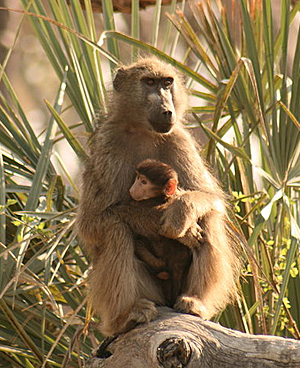

- Rozovsky wins prestigious NSF Early Career Award
- UD students meet alumni, experience 'closing bell' at NYSE
- Newark Police seek assistance in identifying suspects in robbery
- Rivlin says bipartisan budget action, stronger budget rules key to reversing debt
- Stink bugs shouldn't pose problem until late summer
- Gao to honor Placido Domingo in Washington performance
- Adopt-A-Highway project keeps Lewes road clean
- WVUD's Radiothon fundraiser runs April 1-10
- W.D. Snodgrass Symposium to honor Pulitzer winner
- New guide helps cancer patients manage symptoms
- UD in the News, March 25, 2011
- For the Record, March 25, 2011
- Public opinion expert discusses world views of U.S. in Global Agenda series
- Congressional delegation, dean laud Center for Community Research and Service program
- Center for Political Communication sets symposium on politics, entertainment
- Students work to raise funds, awareness of domestic violence
- Equestrian team wins regional championship in Western riding
- Markell, Harker stress importance of agriculture to Delaware's economy
- Carol A. Ammon MBA Case Competition winners announced
- Prof presents blood-clotting studies at Gordon Research Conference
- Sexual Assault Awareness Month events, programs announced
- Stay connected with Sea Grant, CEOE e-newsletter
- A message to UD regarding the tragedy in Japan
- More News >>
- March 31-May 14: REP stages Neil Simon's 'The Good Doctor'
- April 2: Newark plans annual 'wine and dine'
- April 5: Expert perspective on U.S. health care
- April 5: Comedian Ace Guillen to visit Scrounge
- April 6, May 4: School of Nursing sponsors research lecture series
- April 6-May 4: Confucius Institute presents Chinese Film Series on Wednesdays
- April 6: IPCC's Pachauri to discuss sustainable development in DENIN Dialogue Series
- April 7: 'WVUDstock' radiothon concert announced
- April 8: English Language Institute presents 'Arts in Translation'
- April 9: Green and Healthy Living Expo planned at The Bob
- April 9: Center for Political Communication to host Onion editor
- April 10: Alumni Easter Egg-stravaganza planned
- April 11: CDS session to focus on visual assistive technologies
- April 12: T.J. Stiles to speak at UDLA annual dinner
- April 15, 16: Annual UD push lawnmower tune-up scheduled
- April 15, 16: Master Players series presents iMusic 4, China Magpie
- April 15, 16: Delaware Symphony, UD chorus to perform Mahler work
- April 18: Former NFL Coach Bill Cowher featured in UD Speaks
- April 21-24: Sesame Street Live brings Elmo and friends to The Bob
- April 30: Save the date for Ag Day 2011 at UD
- April 30: Symposium to consider 'Frontiers at the Chemistry-Biology Interface'
- April 30-May 1: Relay for Life set at Delaware Field House
- May 4: Delaware Membrane Protein Symposium announced
- May 5: Northwestern University's Leon Keer to deliver Kerr lecture
- May 7: Women's volleyball team to host second annual Spring Fling
- Through May 3: SPPA announces speakers for 10th annual lecture series
- Through May 4: Global Agenda sees U.S. through others' eyes; World Bank president to speak
- Through May 4: 'Research on Race, Ethnicity, Culture' topic of series
- Through May 9: Black American Studies announces lecture series
- Through May 11: 'Challenges in Jewish Culture' lecture series announced
- Through May 11: Area Studies research featured in speaker series
- Through June 5: 'Andy Warhol: Behind the Camera' on view in Old College Gallery
- Through July 15: 'Bodyscapes' on view at Mechanical Hall Gallery
- More What's Happening >>
- UD calendar >>
- Middle States evaluation team on campus April 5
- Phipps named HR Liaison of the Quarter
- Senior wins iPad for participating in assessment study
- April 19: Procurement Services schedules information sessions
- UD Bookstore announces spring break hours
- HealthyU Wellness Program encourages employees to 'Step into Spring'
- April 8-29: Faculty roundtable series considers student engagement
- GRE is changing; learn more at April 15 info session
- April 30: UD Evening with Blue Rocks set for employees
- Morris Library to be open 24/7 during final exams
- More Campus FYI >>
2:07 p.m., May 6, 2009----Monkey communication expert Robert Seyfarth began his lecture on May 5, the kick-off of the University of Delaware's Year of Darwin celebration, with a true story, documented in 1961, about a female baboon that herded goats in an African village.
The baboon knew all of the relationships between the goats so well that at night she would carry a bleating kid from one barn directly to its mother in another barn.
“For all the centuries we've bred dogs, no dog has exhibited this knowledge of kids and mothers,” said Seyfarth, who is a psychology professor at the University of Pennsylvania. “The question is where does this mind come from?”
Seyfarth transported an audience of about 200 people into the fascinating world of the baboons of Botswana's Okavanga Delta, which he and Dorothy Cheney, his research partner, fellow Penn professor, and spouse, studied from 1992 to 2008. Their work is highlighted in the award-winning book Baboon Metaphysics: The Evolution of a Social Mind, published by the University of Chicago Press in 2007.
Based on their research, Seyfarth said, he and Cheney argue that the baboon's ability to recognize social relationships is due to natural selection. This is the process in nature, according to Darwin's theory of evolution, in which only the organisms best adapted to their environment tend to survive and reproduce.
The baboons that Seyfarth and Cheney studied live in groups of 80-90 individuals. Males leave the group in which they are born, while females stay in the group for their entire lives, with close bonds to female relatives.
The females are arranged in a matrilineal hierarchy of families, with ranks maintained for years. Although once in a while a coup is attempted, such moves are not often successful.
“Families stick together,” Seyfarth said. “The rules are, like in a Jane Austen novel, be nice to your relatives and get in with the high-ranking relatives.”
In their experiments, Seyfarth and Cheney observed baboons with names such as Sylvia, Champagne, and Helen, and recorded their language, which consists of no more than 18 sounds, and the interactions of their families.
They found that baboons use certain calls only in certain contexts. Screams and fear barks are only given from a lower-ranking to a higher-ranking baboon, while threat grunts are given only from a higher-ranking to a lower-ranking baboon.
By recording the various calls and then playing them in situations that “break the rules,” the scientists determined from the animals' behavior that baboons are able to put together the discrete elements of identity, kinship, and rank.
“The animals somehow see this world in all of its complexity,” Seyfarth said.
“It's an innate property of the baboon mind -- done instantly and unconsciously,” he noted.
What social factors stress baboons? Seyfarth and Cheney were able to measure the animals' stress levels by analyzing fecal samples for gluccocorticoid stress hormones.
They found that pregnancy and incidences of predation are major stressors. Ninety-five percent of baboon deaths are caused by predators, mostly lions, Seyfarth said.
Also, some high-ranking males practice infanticide, targeting infants by rank. Mothers may form relationships with lower-ranking males who will help look after their babies.
And just as in humans, the loss of a close relative is high on the list, Seyfarth said.
“Females respond to stress by associating with their closest grooming relationships,” Seyfarth said. “They turn to their support network if they lose someone. They broaden and extend to replace old relationships with new ones. Female baboons with strong social bonds survive better,” he said.
A podcast of the presentation can be found at the UD Podcasts Web page.
UD's Year of Darwin Celebration is sponsored by the Center for International Studies and the Department of Anthropology. Karen Rosenberg, professor and chairperson of anthropology, is chairing the University committee that is organizing the series.
Additional support for the series is being provided by the Provost's Office, the College of Agriculture and Natural Resources, the Science Ethics and Public Policy Program, and the following departments: Biological Sciences, English, Geography, Geological Sciences, Linguistics and Cognitive Science, and Philosophy.
The series, to continue through the fall, honors the 200th anniversary of Charles Darwin's birth and the 150th anniversary of the publication of his landmark work, On the Origin of Species.
Article by Tracey Bryant
Photo by Kathy F. Atkinson


